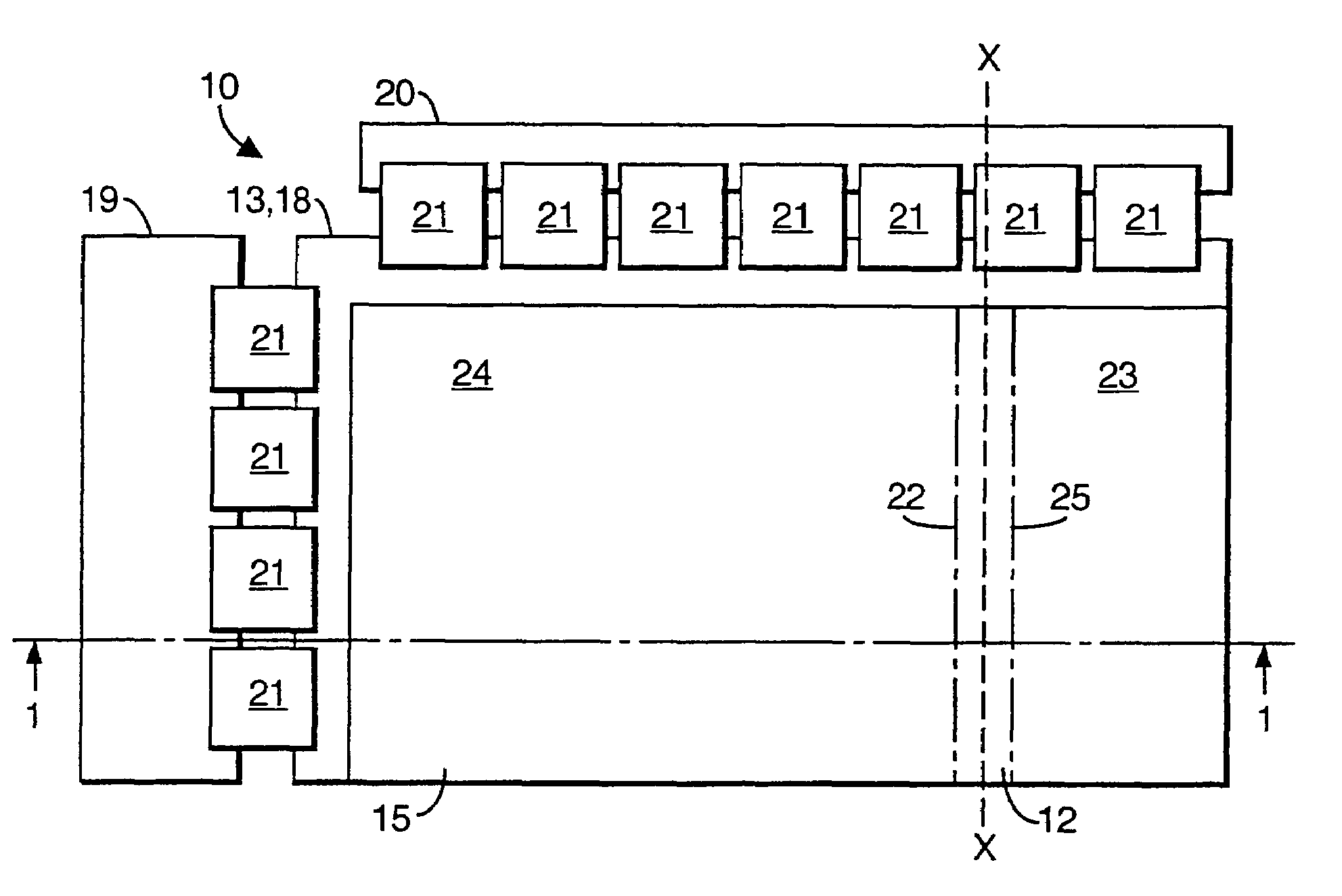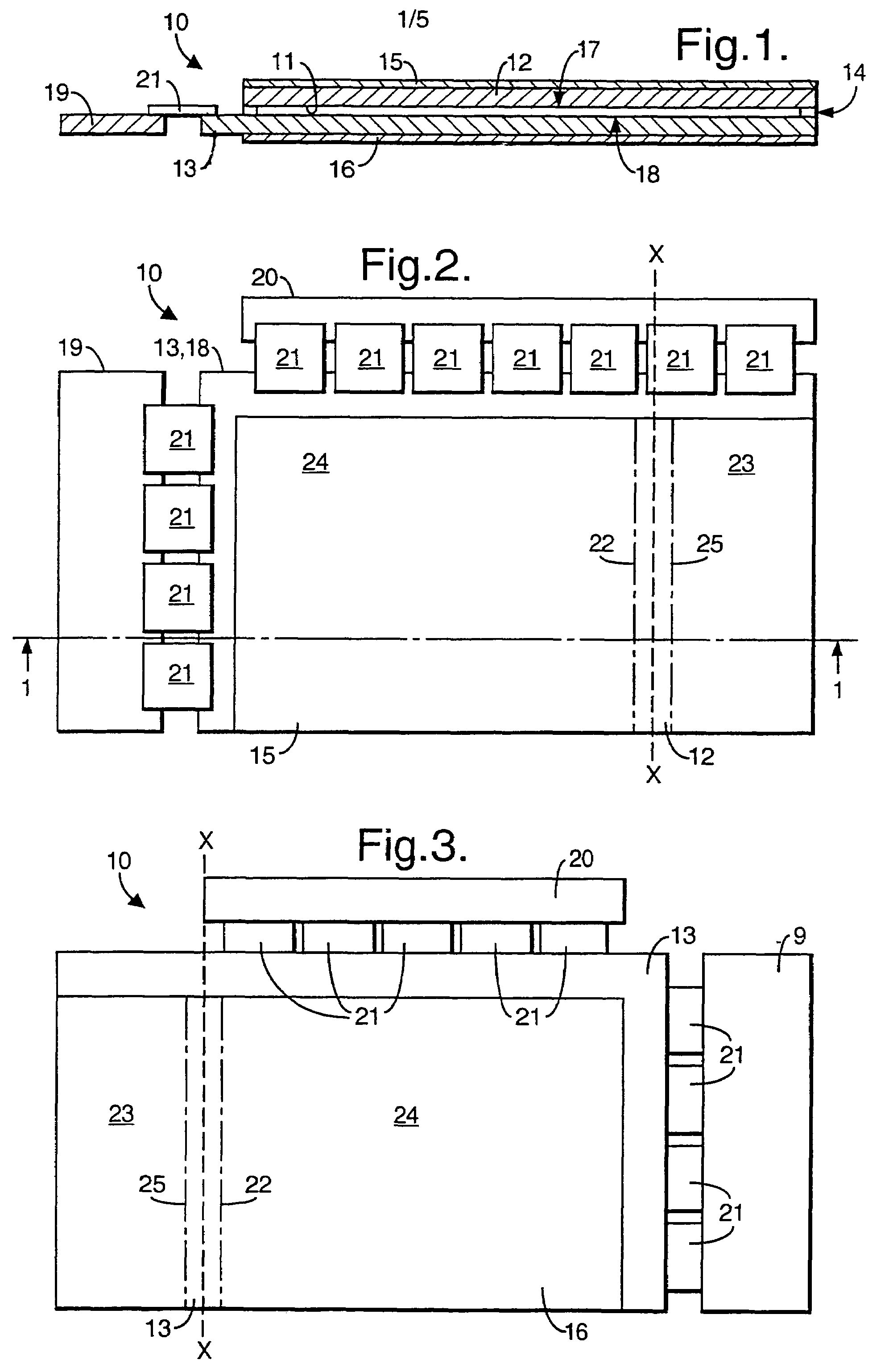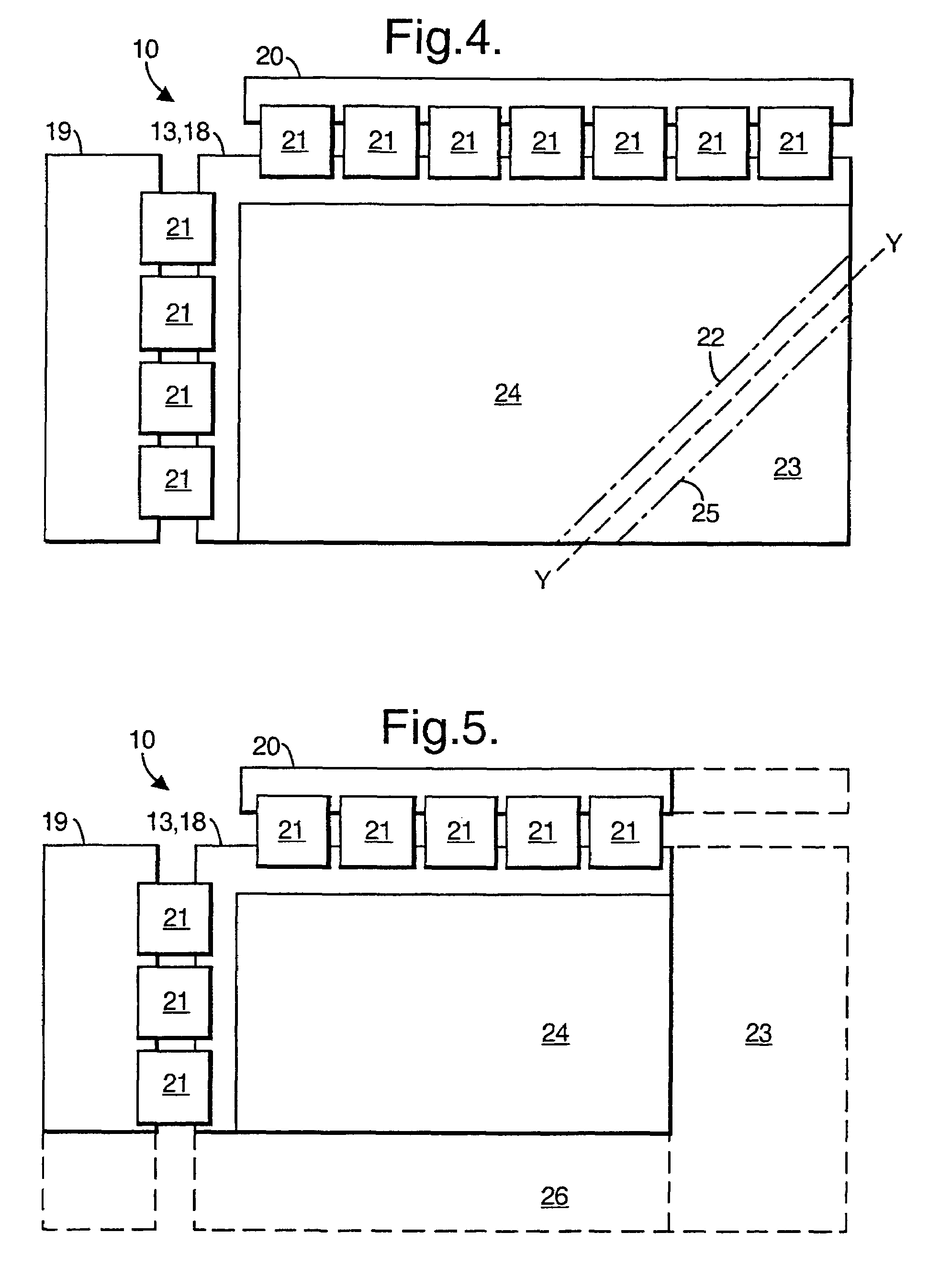Liquid crystal displays
a technology of liquid crystal display and display plate, which is applied in the field of liquid crystal display plate, can solve the problems of low manufacturing yield rate, high cost per unit, and high cost per unit, and achieve the effects of reducing cost per unit, substantial damage to the display plate, and high volum
- Summary
- Abstract
- Description
- Claims
- Application Information
AI Technical Summary
Benefits of technology
Problems solved by technology
Method used
Image
Examples
first embodiment
[0039]In a first embodiment, as will be seen from FIGS. 1 and 2, the glass plate 13 and its associated conductive layer 18 are larger than the glass plate 12 so that they extend to the left towards a vertical driver card 19, and upwards towards a horizontal driver card 20. A series of ribbon connectors or TABs 21 electrically interconnect the driver cards 19 and 20 with the various portions of the conductive layers 17 and 18 in well-known manner so that the driver cards 19, 20 will determine which portions of the conductive layers 17 and 18 are to be energized.
[0040]FIG. 3 shows the reverse side of the liquid crystal display 10, the reverse side of the vertical and horizontal TAB's 21, driver cards 19 and 20, and the light polarizing substrate 16.
[0041]In FIGS. 2 and 3 the required width of the final liquid crystal display 10 is indicated by a chained line 22 and is achieved by removing an excess region 23 of the liquid crystal display 10 in the following manner. With reference to F...
second embodiment
[0054]FIGS. 6 and 7 illustrate the process for removing an excess region from a pre-manufactured liquid crystal display. The same reference numerals have been used as those in FIGS. 2 to 5 to denote equivalent features.
[0055]The required shape of the final liquid crystal display 10 is indicated by a solid line 22 and is achieved by removing an excess region 23 of the liquid crystal display 10 in the following manner.
[0056]With reference to FIG. 6, narrow strips of light polarizing substrate 15, 16, defined by the solid line 22 and a parallely-spaced line 25 on the opposite side of broken line C-C, are optionally removed from both sides of the liquid crystal display 10 and the exposed areas cleaned, as previously described. A laser, not shown, is then used to cut through glass plate 12 and glass plate 13 along line C-C. In this manner both glass plates 12, 13 are cut at the same time and the excess region 23 of the liquid crystal display 10 can be removed to expose cut edges of the g...
third embodiment
[0061]In the process, not illustrated, the liquid crystal within the liquid crystal display or a part thereof can be frozen or have its viscosity reduced using liquid nitrogen and both plates can then be machined through in one action using, for example, a diamond wheel cutter. In this manner the risk of contamination of the liquid crystal is mitigated and the number of voids introduced into the liquid crystal is reduced.
[0062]Should a liquid crystal display be required with a larger operative region then, as shown in FIG. 9, four liquid crystal displays 10 can be prepared as described with reference to FIG. 5 and can have their respective operative regions 24 combined by aligning and abutting their respective cut edges 27 and 28, the four liquid crystal displays 10 then being laminated to form a single display with increased operative area. Such lamination is preferably achieved by adhering transparent plates to the entire front and back surfaces of the four operative regions 24 us...
PUM
| Property | Measurement | Unit |
|---|---|---|
| physical shape | aaaaa | aaaaa |
| dimensions | aaaaa | aaaaa |
| area | aaaaa | aaaaa |
Abstract
Description
Claims
Application Information
 Login to View More
Login to View More - R&D
- Intellectual Property
- Life Sciences
- Materials
- Tech Scout
- Unparalleled Data Quality
- Higher Quality Content
- 60% Fewer Hallucinations
Browse by: Latest US Patents, China's latest patents, Technical Efficacy Thesaurus, Application Domain, Technology Topic, Popular Technical Reports.
© 2025 PatSnap. All rights reserved.Legal|Privacy policy|Modern Slavery Act Transparency Statement|Sitemap|About US| Contact US: help@patsnap.com



